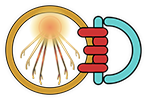Pre 1700
The city at Amarna had been systematically dismantled in antiquity however the Boundary Stelae surrounding the city’s location and the tombs of the nobles to the north and south of the eastern cliffs had remained relatively untouched. The tombs were visited in antiquity with many leaving behind short messages, not as marks of vandalism but in respect of the work carried out by the tomb builders. One such message can be found in the tomb of Ahmes, tomb 3 of the northern group. Here a second century Roman citizen by the name of Catullinus has inscribed “Having ascended here, Catullinus has engraved this in the doorway, marvelling at the art of the holy quarriers.”(de G. Davies 1905b, 34, Pl.XXXV 1). His message was in addition to others dating back to 320 BCE who all marvelled at the wall paintings including that of Akhenaten and Nefertiti riding in a chariot between the palace and the Great Aten temple. It may have been that the location of the tombs held a special power of place which drew people to make a form of pilgrimage. In tomb 6, belonging to Panehsy, we see that the tomb was felt to be holy enough to have had the outer hall enlarged and modified in the creation of a Coptic Christian church. It is interesting that they too felt that the wall paintings were not at odds with their beliefs and, with the exception of the lower north-west side, left most of them intact (de G. Davies 1905a, 9-32, Pls. II, III). Whatever the visitors to the tombs thought about the people and events portrayed on the walls is difficult for us to know as there are no written accounts from the classical period. The Christian pilgrims may have looked at the images of Akhenaten and Nefertiti worshipping the Aten’s sun disc and related it in some way to their Christian beliefs, however there is no evidence of this continuing beyond the seventh century CE as Egypt came under Muslim rulers. From a game development point of view this could later be explored as a small Coptic community, the ruins of which are still present, which may also be linked to the monastic settlement in the southern end of Amarna known as Kom el-Nana.
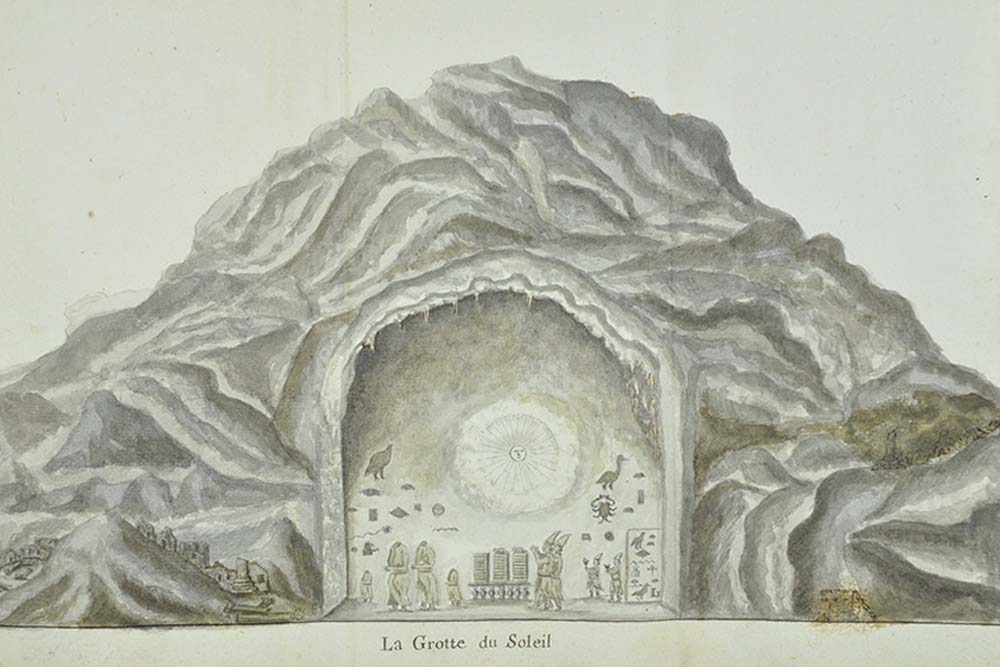
Figure 1, Sketch of Boundary Stela ‘A’ drawn by Claude Sicard in 1714 (van de Walle 1976)
1700’s
It wasn’t until the beginning of the eighteenth century that European travellers began to look at the representation of Akhenaten in a more curious light. The first of these travellers to write about this was the French Jesuit Priest, Claude Sicard in November 1714 (van de Walle 1976, 8–9). In addition to his mission to make converts to Christianity he was also under instruction to document ancient monuments on his travels. On a visit to Tuna el-Gebel he was shown a rock carving which in modern times is referred to as the boundary stela ‘A’, depicting Akhenaten worshiping the Aten’s rays. His description and subsequent sketch were published in his later work which included the first known map of Egypt (van de Walle 1976). The description mistakenly identified Akhenaten and the Royal family as priests wearing tall pointed hats accompanied by two little boys wearing similar headgear worshipping the rays of the sun. Opposing them were two women and two girls but with their heads smashed off. His illustration can be seen in Figure 1 and we can see that whilst he tried to capture the essence of the carvings, he was not particularly accurate in their actual representation as can be seen in Hay’s sketch from 1827, Figure 2. He was unable to discern the period which they were from as they were so different to other ancient Egyptian art works giving rise to an idea that these may have been non-Egyptians. Sicard is mentioned in the publication of Frederick L. North and Charles Perry’s visit to Amarna on their travels between 1738 and 1741 (Perry 1743, IX–XI). They travelled by boat along the Nile and visited the area both on their outward and return journeys having had a close encounter with pirates on each occasion. Perry and North likely visited the rock tombs and the boundary stela ‘U’ (Perry 1743, 331,332).
This is an example of two different interpretations of the same feature and if the sketch by Sicard had been used to create a reconstruction it would have been in error. The later sketch by Hay gives a more accurate representation and one which shows more detail than that found today. If a narrative was to be constructed around the excavation history of Amarna, then the journey by North and Perry would certainly give some interesting plots. The location of the Boundary Stelae gives an indication of the possible extent of the environment should an open-world experience be developed.
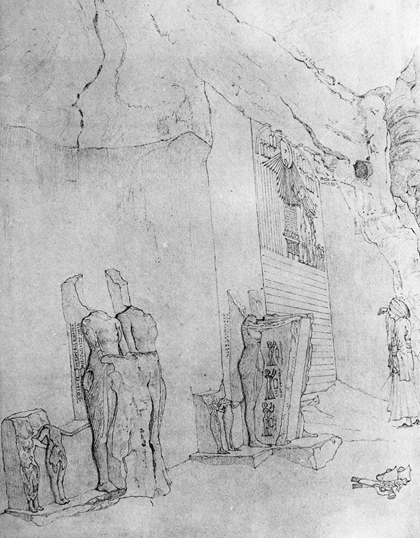
Figure 2, Robert Hay’s sketch of Boundary Stela ‘A’ in 1827 (de G. Davies 1908a, Pl XLIII)
1800’s
It wasn’t until the Napoleonic expedition to Egypt that the city ruins began to be mapped. The collection of maps relating to the site is of value as it can show how the site was interpreted at different times and stages of exploration. It is also possible to see if any features which have been lost since are recorded. Between 1798 and 1799 Edmé Francois Jomard surveyed a small region of the site around what is now known as the Central City and subsequently published it in the Description de l’Égypte in 1817 (Planches IV plate 63.6-9) shown in Figure 3. He describes the ruins of the Small Aten temple and the impressive size of the mudbrick pylons at the entrance which, although ruined at that time, still stood 7.33m in height. Jomard was amazed at the expanse of ruins across the plain and stated that it astonished him as much as anything else he had seen in Egypt (Montserrat 2000, 61). The sketch work here can, through the brickwork and sloping faces of the pylons, be used to extrapolate a possible height.
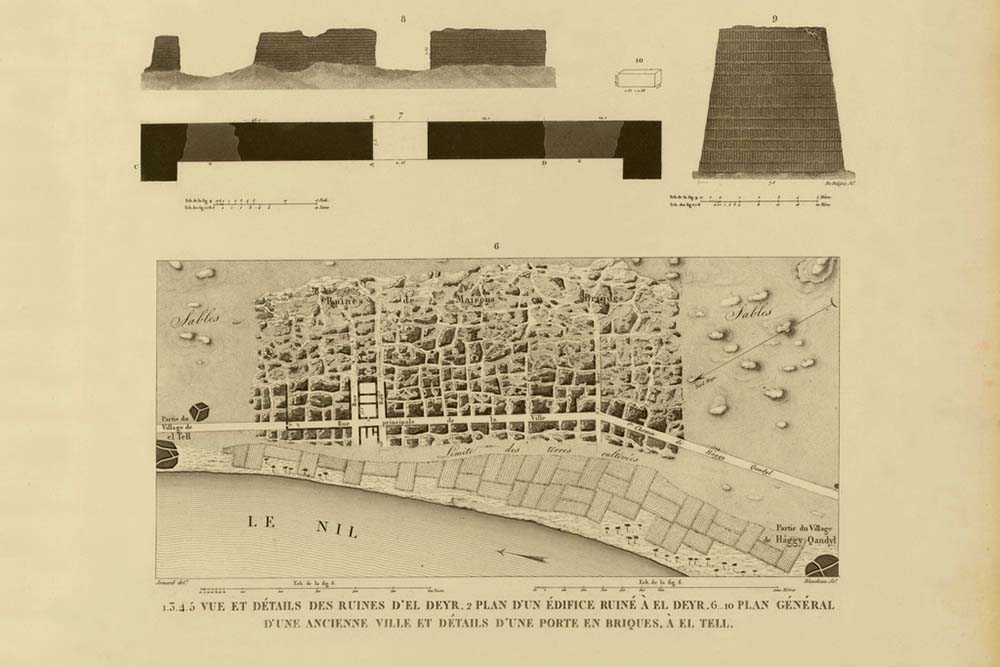
Figure 3, Edmé Jomard’s Plan of Amarna and the Small Aten Temple Pylon (Commission des sciences et arts d’Egypte 1822, Pl 63)
Once the Napoleonic Wars had ended it was the turn of the English travellers to explore the area and in 1824 the English antiquarian John Gardner Wilkinson visited the site and [re]discovered the rock tombs in the cliffs on the east side of the city (Wilkinson 1830, 21,22, 1835, 384–386). In a second visit in 1826 Wilkinson, in the company of James Burton, ventured behind the cliffs and discovered an ancient alabaster quarry at Hatnub which prompted him to identify [wrongly] the city as that of the classical ‘Alabastron’ mentioned by Pliny and Ptolemy. Wilkinson surveyed the Central City and made many casts and drawings of the inscriptions he found, later publishing a selection in his ‘Manners and Customs of the Ancient Egyptians’ (Wilkinson 1847, 350, Pl. VII). He uses a plan of the Central City as an example of ancient Egyptian town planning, see Figure 4. Wilkinson realised the error in identifying the site as ‘Alabastron’ and decided to call it ‘Til el Amarna’ based on its proximity to the nearby villages named ‘el-Till’ and el-‘Amariyeh. Unfortunately the ‘Till’ name was mistakenly replaced by the term ‘tell’ meaning [man-made] mound and the name ‘Tell el-Amarneh’ stuck for a long period until modern times where it is generally referred to as ‘Amarna’ (Peet and Woolley 1923, v). Wilkinson noted that the names of the people depicted in the wall carvings had been defaced in antiquity and decided that they must have been invaders based on their absence from the kings list, appearance, and their method of worship.
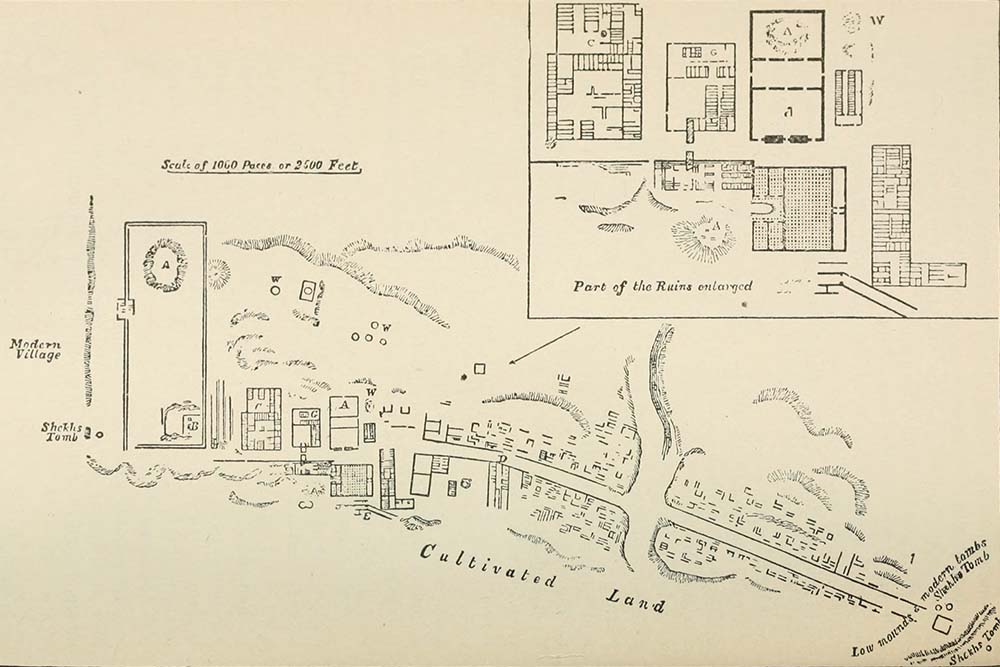
Figure 4, Wilkinson’s Plan of Amarna c.1826 (Wilkinson 1847, 350, Pl. VII)
An acquaintance of Wilkinson, Robert Hay, who was also a well-known antiquarian and travelled regularly with Wilkinson throughout Egypt, visited the site in 1827 after finding out about its location from Burton who had been sworn to secrecy by Wilkinson not to disclose its existence. Wilkinson believed that treasure may be found within the tombs. This caused a great falling out between them, but Hay went on to draw boundary stela ‘A’ (de G. Davies 1908a, Pl. XLIII) and examine tombs 2 and 13 during the summer of 1830 (Montserrat 2000, 63).
In 1828 Jean-Francois Champollion, famed for unlocking the secret of hieroglyphs, made a visit to ‘Touna-Gebel’ [Tuna el-Gebel] to view stela ‘A’ and remarked “King very fat and swollen, big belly. Feminine contours … considerable softness” (Hornung 1999, 2). Champollion also travelled to ‘El-Tell’ where he identified the Great Aten temple but, despite his breakthrough in deciphering hieroglyphs, he still had no knowledge of Akhenaten (de G. Davies 1903, 5). In 1839 an old colleague of Champollion, Nestor L’Hote visited the boundary stela ‘A’, the city, and the rock tomb sites (L’Hote 1840, 129–134). He examined tomb 3 and made several castings which were unfortunately destroyed by water in the hold of the ship transporting them back to France.
It was Karl Richard Lepsius who was to make a breakthrough in our understanding of what was known about the reign of Akhenaten. Lepsius visited Amana in 1843 for three days and again in 1845 for nine days as the head of the Prussian archaeological mission to Egypt where he drew an updated ground plan of the ruins (Figure 5) and recorded the northern tombs (de G. Davies 1903, 4). Afterwards while in Europe he decided that Akhenaten was male despite the rather feminine portrayal in wall carvings and theorised he was likely a rebel king from the 18th dynasty. He also noted the emergence of the sun cult as a powerful new religion. Lepsius delivered his study in 1851 to the Prussian Academy of Sciences, Berlin (Lepsius 1851, 199) and in 1859 Heinrich Brugsch followed it up with a section in his ‘History of Egypt’ regarding the “Period of Religious Reformation” during the 18th dynasty (Brugsch 1859, 118–123; Brugsch-Bey 1879, 441–474). Here we have the first analysis of how ancient Egyptian culture and religion was fundamentally changed through the worship of one God. We witness here in the monumental inscriptions the foundation of a new religion in antiquity.
For the next two decades scholars contemplated this new information and in 1881 Gaston Maspero and Urbain Bouriant working as part of the Missions Archéologiques Françaises au Caire began excavating the tombs at Amarna over a period of 3 years. During the 1883-1884 season Bouriant discovered the “Great Hymn to the Aten” in the tomb of Ay (Bouriant 1889). The ‘Hymn of the Sun’ was to become the subject of James Henry Breasted’s PhD dissertation ‘De hymnis in solem sub rege Amenophide IV conceptis’, submitted to the University of Berlin in 1894 (Wilson 1936, 97).
The publication of the hymns as both glyphs and translation allows for some of the text to be used as wall decoration elsewhere on the 3D models if appropriate.
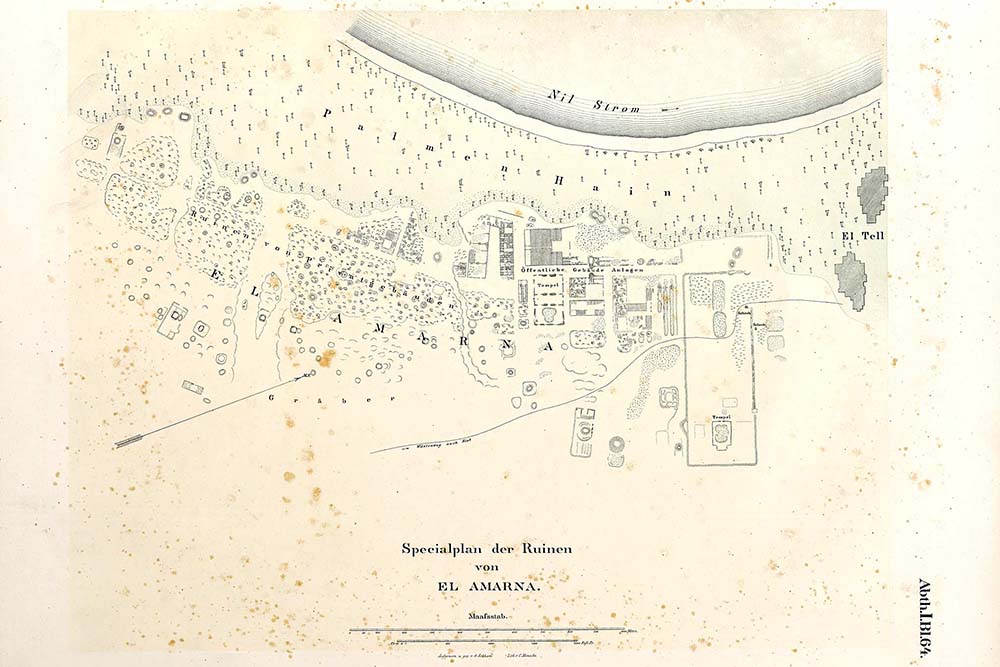
Figure 5, Plan of El-Amarna (Lepsius 1856, Abth.I.BI.64)
It was in 1887 that an incredible discovery was made by a local woman whilst out looking for fuel, that of nearly 400 clay tablets inscribed in cuneiform script, see Figure 6. Now referred to as the Amarna Letters they comprised the international diplomatic correspondence between Akhenaten’s court and the lands under his control (Moran 1992, xiii). In a disastrous turn of events the woman travelled with the tablets unsecured in a sack to sell to Egyptologists who did not recognise their value at that time. Before their importance was realised many of them had been reduced to fragments. The remaining letters became part of the great debate at the time between archaeology and the historicity of the Bible (Montserrat 2000, 66). Due to the discovery of the clay tablets the Egypt Exploration Fund of London sent an excavation team to Amarna between 1891 and 1892 under the guidance of William M. F. Petrie and his assistant Howard Carter. More clay tablets were fortunately discovered at what Petrie later named the “State Archives” near the royal residence (Petrie 1894).
These tablets have been studied and commented on by several scholars (Mynářová 2007; Moran 1992; Rainey 2015) and give an indication of the domestic and foreign affairs which can be woven into stories of the time. For an extended compilation of general texts including names and titularies from the Amarna Period see ‘Texts from the Amarna Period’ (Murnane 1995). The texts referenced by Murnane include tomb inscriptions, door jambs, and various fragments recovered from Amarna.
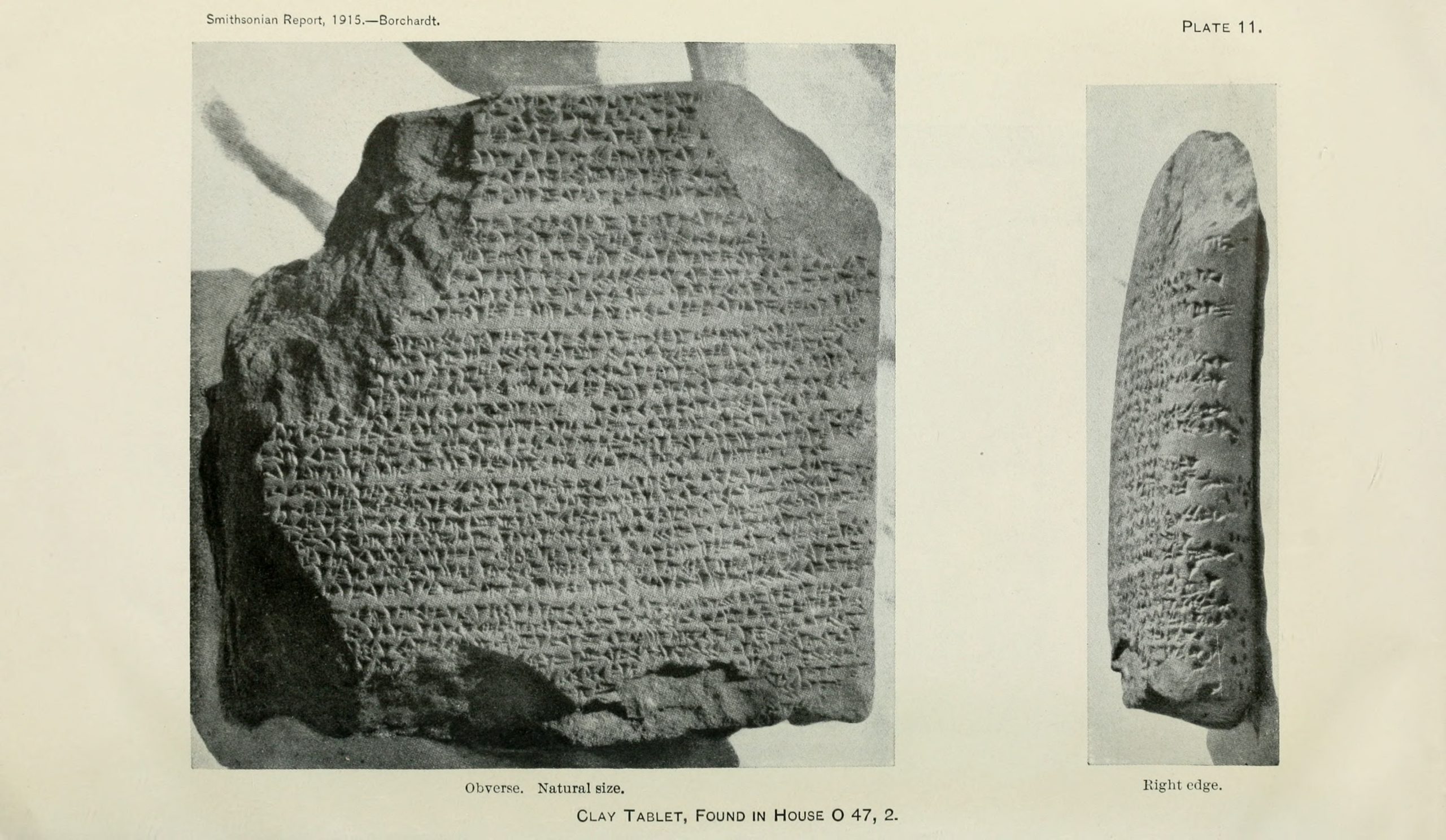
Figure 6, Clay Tablet found in House O47.2 (Borchardt 1916, Plate 11)
Whilst at Amarna Petrie discovered wall-paintings in the King’s House (Weatherhead 1995) and a beautiful painted floor in the North Harem (Weatherhead 1994). The floor was later broken up by a disgruntled farmer one morning in protest to travellers crossing his land to see the excavations. Its remains are present under a wood and glass enclosure in the Cairo Museum (Weatherhead 1992). The modern analysis of the painted walls and pavements by Weatherhead helps give an insight into the surface decoration of the royal and upper social class architecture, see Figure 7.
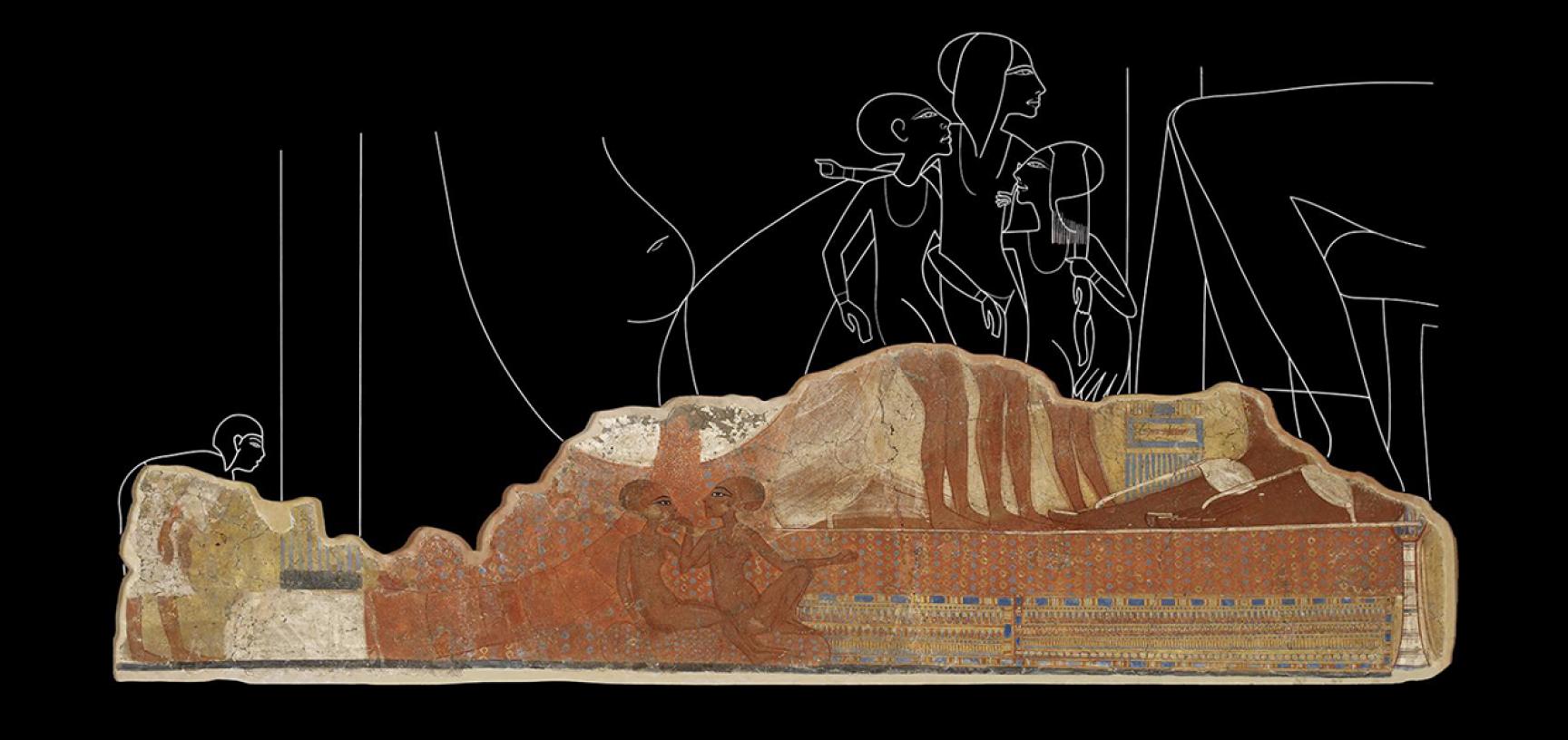
Figure 7, Princess Fresco, Tell el-Amarna, Egypt (image Ashmolean Museum, AN1893.1–41.267)
During the same season the royal Tomb of Akhenaten is ‘officially’ discovered and excavated by Alessandro Barsanti of the Egyptian Antiquities Service. There is some confusion over its discovery date as Petrie notes locals may have found it four years earlier and looted the tomb cutting sections of wall carvings to sell to travellers. This type of physical destruction has left the tomb in a sorry state and deprived us of unique study material. There is evidence that the tomb may have been discovered even earlier as in 1882 jewellery, allegedly from the tomb, was sold on the antiquities market (Martin 1989, 4). After clearing the Royal Tomb, Barsanti excavated the Maru-Aten Palace situated towards the southern end of Amarna in 1896 and removed some of the painted floor panels. They were placed in the Egyptian collections of the Cairo and Berlin museums (Peet and Woolley 1923). The Maru-Aten has not survived through to modern times due to agricultural reclamation.
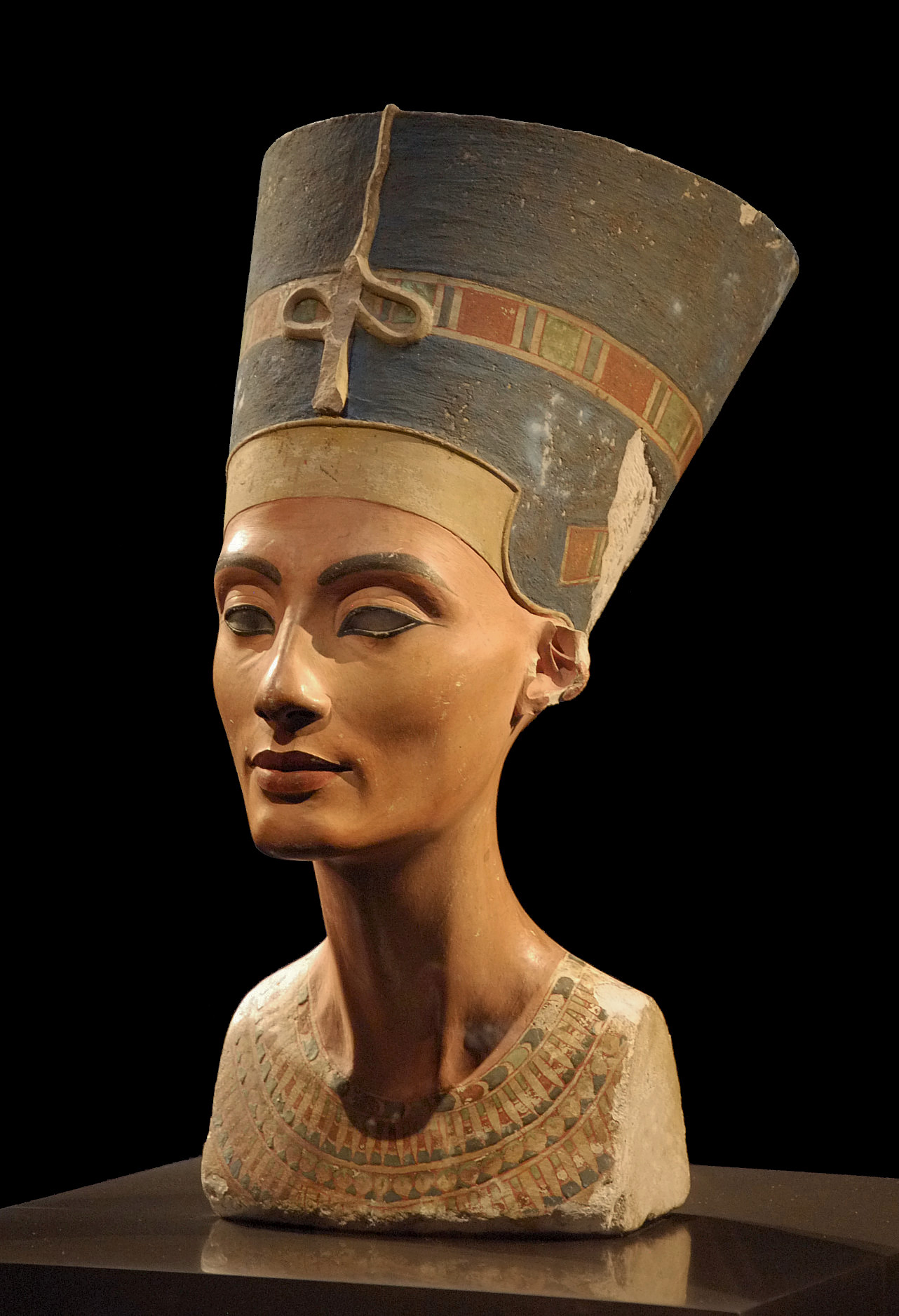
Figure 8, bust of Nefertiti, Neues Museum, Berlin (CC-0)
1900’s
Interest continued to grow regarding Amarna and between the years 1901 and 1907 Norman de Garis Davies conducted a full survey of the rock tombs at Amarna, later publishing his research in 6 volumes (de G. Davies 1908a, 1905a, 1903, 1905b, 1908b, 1906). During this period, in 1903 Bouriant, Legrain, and Jéquier published the first scientific monograph of the Royal Tomb of Amarna (Bouriant,Legrain and Jéquier 1903). The inscriptions give insights into the architecture of Amarna and when combined with survey plans create an invaluable resource for the 3D modelling of Amarna. The daily life and ceremonial depictions also feed into potential storylines.
In 1907 the Deutsche Orient-Gesellschaft (DOG – German Oriental Society) secured the concession to excavate at Amarna and Ludwig Borchardt began his first excavations of the site ruins; the most extensive up to that point (Borchardt and Ricke 1980). Meanwhile Theodore Davies, whilst excavating in the “Valley of the Kings”, believed he had found the mummy of Akhenaten within Tomb No. 55. This prompted Arthur Weigall to write the first monograph on Akhenaten entitled “The life and times of Akhnaton, Pharaoh of Egypt” (Weigall 1910). Borchardt continued his excavations in the southern city ruins and in 1912 whilst excavating the house of a sculptor, possibly named Thutmoses, he found numerous model heads, amongst them the now famous bust of Queen Nefertiti (Borchardt 1916, 1923). The bust made its way to Germany under rather controversial circumstances and became one of the most iconic Egyptian works of art, Figure 8.
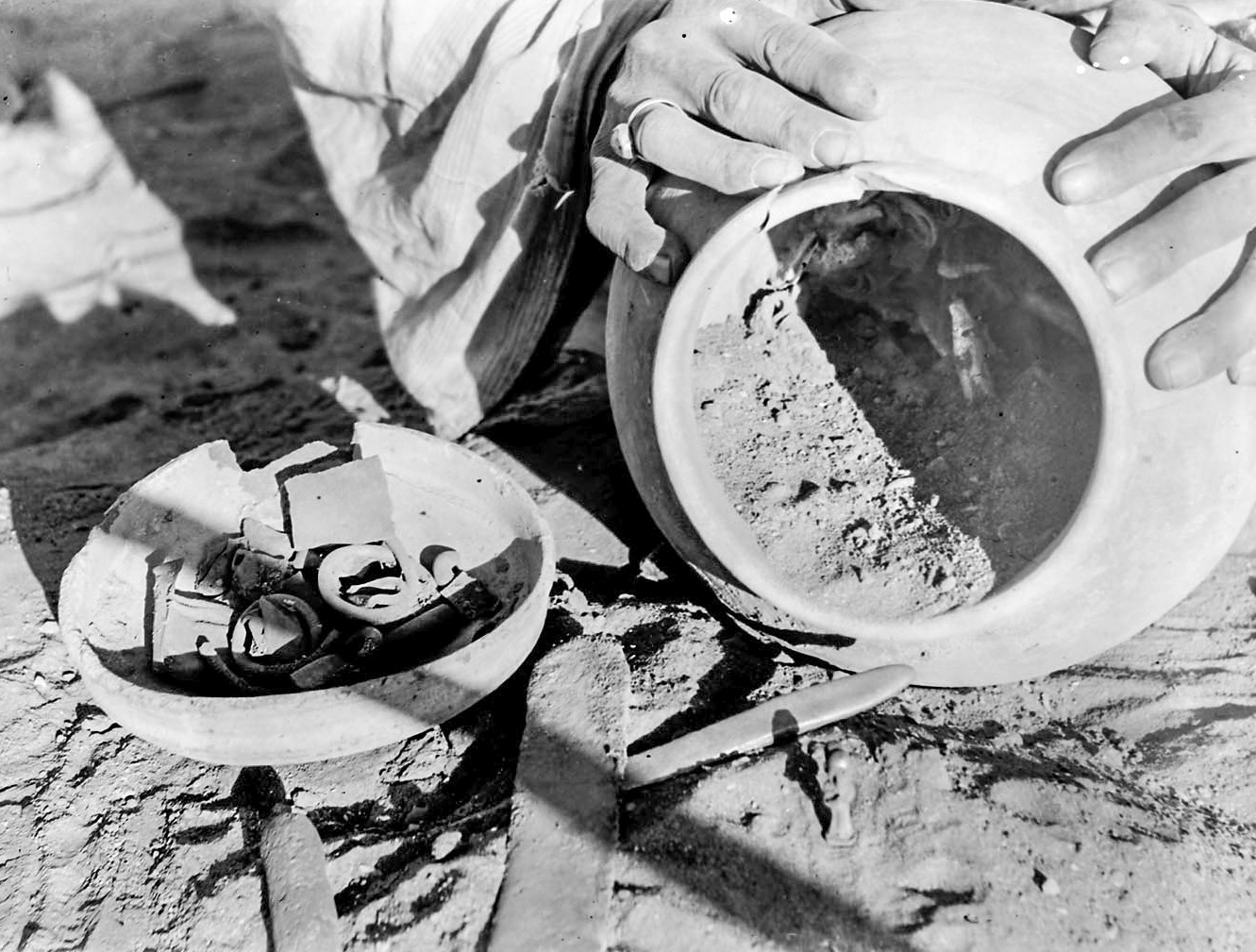
Figure 9, the crock of gold discovered during the 1930-31 season (EES TA30.31.024)
With the outbreak of the First World War all work at Amarna was halted until 1921 when the Egypt Exploration Society began extensive excavations in the urban area through to 1936 under the direction of Thomas Eric Peet, Leonard Woolley, Francis Newton, Henri Frankfort and John D. S. Pendlebury. The excavation reports were later released as ‘The City of Akhenaten’ in three parts (Frankfort and Pendlebury 1933; Peet and Woolley 1923; Pendlebury 1951). During this extensive excavation period the north suburb, eastern village, central city, and Maru-Aten were recorded (Frankfort 1929, 1927; Griffith 1924; Newton 1924; Peet 1921; Pendlebury 1931, 1932, 1935, 1936, 1933; Whittemore 1926; Woolley 1922). It was during the 1930 season that Mary Chubb accompanied the expedition and later published an account of their daily activities in her book ‘Nefertiti Lived Here’ (Chubb 1954) giving an interesting insight into workings of the expedition. One of the events Chubb writes about is the discovery of a crock of gold which caused a stir amongst the local people (1954, 131–141) and was captured by photograph, see Figure 9.
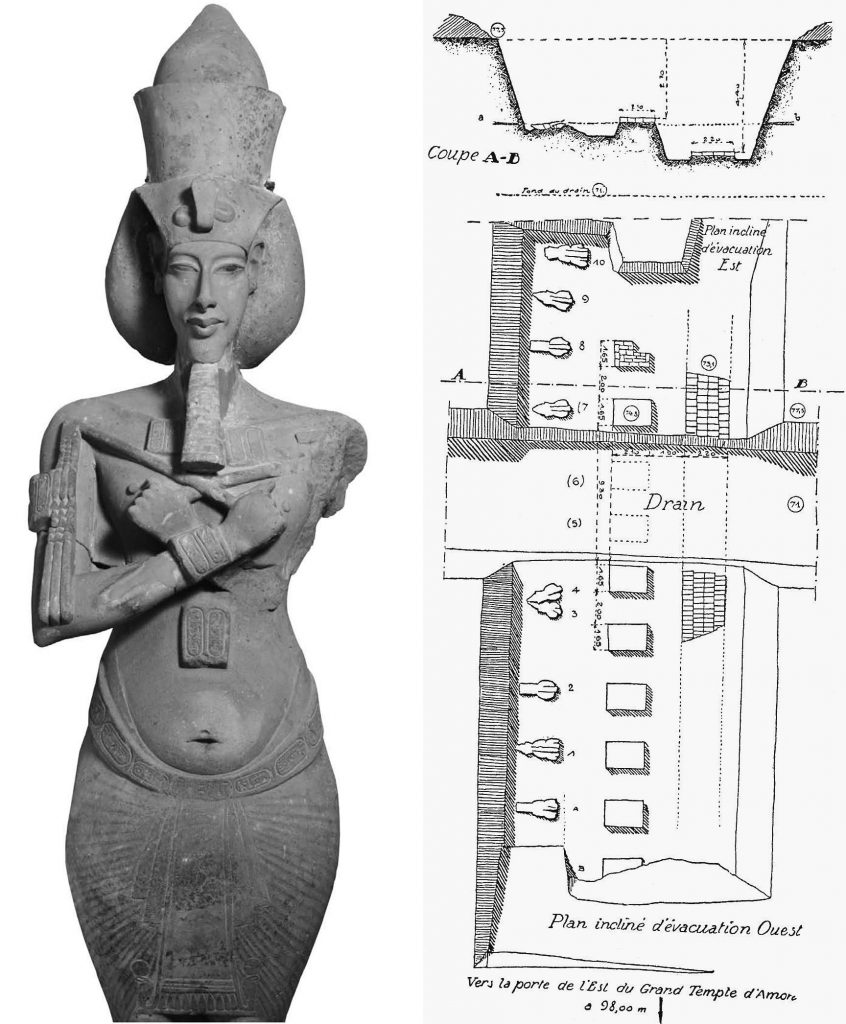
Figure 10, Left image: one of the first two colossi found (Manniche 2010, 2), right image: Chevrier’s first plan of the excavation (ASAE 26, 1926, p. 192)
During the period of EES excavations, Egypt was thrown under a global spotlight by the discovery of Tutankhamun’s tomb KV62 in 1922 by Carter. The subsequent ‘Egyptomania’ prompted greater funding for excavation in Egypt and new Amarna related discoveries were made at Karnak. In 1925 Maurice Pillet discovered two large colossi of Akhenaten whilst engaged in rescue work at the eastern gate of Karnak (Manniche 2010, 1–14), see Figure 10. This was followed up by a formal excavation conducted by Henri Chevrier in 1926 which recovered more fragments totalling 15 colossi. These would have been part of a peristyle courtyard dedicated to the Aten at Karnak; a similar albeit larger court was also located at Amarna. The colossi drew even more attention towards the physical appearance of Akhenaten.
The colossi are the best representation of Akhenaten to be discovered and allow for a full reconstruction in 3D. This is fortunate as there are many locations around the city where his statue would have been present. The Great Palace has evidence of at least 100 colossal statues surrounding its main courtyard.

Figure 11, Talatat blocks assembled from Karnak (image Wikimedia Commons)
Since the 1890’s decorated stone blocks of a uniform size had been discovered within the pylons of Karnak. These came to be known as the Karnak Talatat (Aldred 1988, 69–85; Hoffmeier 2015, 93). With their distinctive artistic style dating them to the time of Akhenaten and their number reaching to over 40,000 many have been able to be pieced back together providing important visual insights into the art and history of the Amarna period, see Figure 11. Originally done by hand it was later augmented through the use of IBM computers during the 1970’s as the Akhenaten Temple Project under the direction of Donald B. Redford (Redford 1973). In 1939 west of Amarna, the German Hermopolis expedition under the direction of Günther Röder uncovered layers of talatat in the foundations of the ruined pylons constructed by Ramesses II (Montserrat 2000, 50). There was not enough time to photograph or store them safely, so they were buried in the hope of returning the following year. Unfortunately, the Second World War broke out and over the next few years the blocks were removed and sold on the open market. Many blocks were sawn into pieces and touched up with watercolours to appeal to buyers and after the war no blocks remained at the site (Aldred 1988, 86). It was clear though, from their subtle detailing, that these blocks were from the later Amarna period belonging to the temples and palaces at Amarna. Fortunately, many of these have since been recovered.
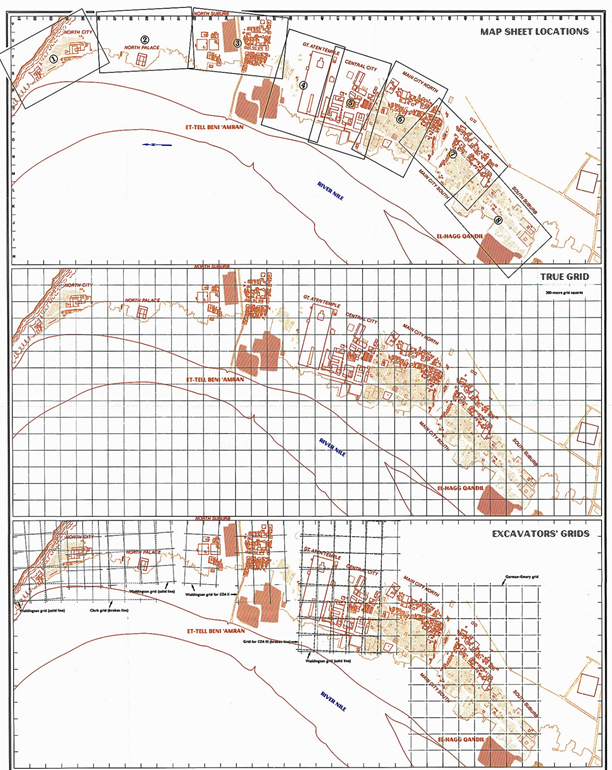
Figure 12, The 1977-1989 City Survey Sheets (Kemp and Garfi 1993)
During the 1960s the Egyptian Antiquities Organization (now the Egyptian Supreme Council of Antiquities) excavated in the Kom el-Nana and el-Hagg Qandil areas but no material has yet been published. So, it was in 1977 that the Egypt Exploration Society resumed excavations at Amarna under the direction of Barry J. Kemp; a position he still holds. Kemp initially set out in early 1977 to consolidate the previous survey work and update it as needed (Kemp 1978). He was assisted by Salvatore Garfi in 1981 and together produced the first large scale survey maps of the site by 1989 for publication four years later (Kemp and Garfi 1993). Figure 12 shows the extent of the work carried out. Kemp’s focus at Amarna was to study the urban life across the full social and environmental spectrum and the nature of the site gives a unique opportunity to do so. A series of Amarna Reports were published between 1984 and 1995 (Kemp 1987a, 1984, 1995, 1985, 1986, 1989) with further preliminary reports published in the JEA at the end of each active season to the present. In 1979 work began excavating the ‘Workman’s Village’, a walled village set aside from the main city for the housing of tomb builders (Kemp 1987b), with similarities to the village at Deir el-Medina. The village caused interest in that there was evidence showing the active worship of gods other than the Aten (Kemp 1979). At the start of 1980, Geoffrey Martin recorded the surviving reliefs and inscriptions in the Royal Tomb along with a study of the potsherd left behind from previous excavators and published as Part VII of the ‘Rock Tombs’ series (Martin 1989). In the same year the Deutsche Orient-Gesellschaft published the results of the excavations in Amarna between 1911 and 1914 under the title “Die Wohnhäuser in Tell el-Amarna” (The houses in Tell el-Amarna) which included 112 detailed house plans and a series of overview maps, see Figure 13 (Borchardt and Ricke 1980).
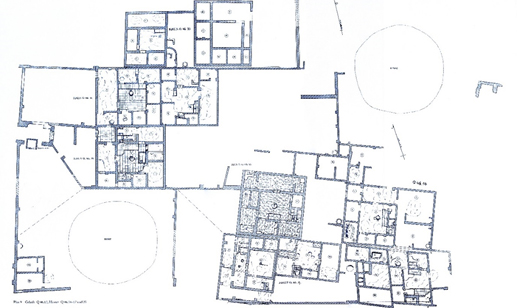
Figure 13, one of Borchardt’s plans showing larger housing supported by smaller buildings. Plan 9 – Gehöft Q46.12,Häuser Q46.14-17 und 25 (Borchardt and Ricke 1980)
2000 to Present
Between 2002 and 2006 excavations took place on the house of an official named Ranefer and a group of eight adjacent houses known as ‘Grid 12’. The house of Ranefer had been built over a previous smaller house and may have indicated a change of ownership in the later years of the city’s life. The results were published in two volumes in 2010 (Kemp and Stevens 2010). Here we see an example of a small community which may have been dependent on the larger house, something common throughout the city and important when developing storylines for Amarna.
During the 2003 and 2005 surveys of the southern tombs a series of disturbed burials were identified and subsequently excavated between 2006 and 2013 (Kemp 2007). A second cemetery was discovered at the north tombs 2 and 3 and excavated between 2015 and 2017, with a third cemetery, previously discovered by Helen Fenwick’s 2001 GPS desert survey, beginning in 2018 (Stevens et al. 2019). The aim of this long-term study of non-elite cemeteries was to shed light on the lives of the people who lived at Amarna which could only be achieved in a limited capacity through the excavations within the city. There are many questions surrounding the people buried here, and work is still ongoing. One interesting discovery was evidence of a peculiar method of punishment which may have been enacted at Amarna. Normally reserved to constrain the movements of pigs, a hole drilled through the shoulder blade would be debilitating enough for an individual to prevent them from using their arm for work for a period until it healed (Kemp 2010, 8–9). Once healed the individual should regain the use of their limb. Preliminary data from the south tombs indicates that the average age of death for the local population who lived into adulthood was 34 for women and 30 for men based on 154 individuals (Kemp 2009, 4). The data also shows that older adults who had grew up elsewhere before coming to Amarna had an average height of 165cm for males and 156cm for females whilst those who had grew up in Amarna were 3cm shorter indicating the possibility that childhood nutrition at Amarna may have been poorer than elsewhere.
In December 2012 an exhibition entitled ‘In the Light of Amarna: 100 years of the Nefertiti discovery’ opened in the Neues Museum, Berlin. Over one thousand artefacts from Amarna, including the Nefertiti bust, were on display and to accompany the exhibition a catalogue and series of essays were published (Seyfried 2012). This provides a rich resource for understanding the craftmanship and the material culture of Amarna. Amongst the expert contributors, including Amarna Project director Barry Kemp, was Christian Tietze who also published his theories of eight building types at Amarna (Tietze (Ed) 2008) and Kate Spence who’s work on interpreting the house plans into 3D is extremely valuable for subsequent digital visualisation (Spence 2015). Figure 14 illustrates one of the Amarna houses described by Spence and modelled by Docherty.
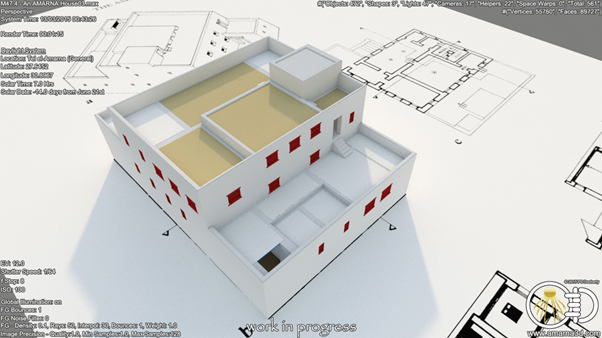
Figure 14, Amarna house M47.4 modelled by Paul Docherty
To round up this review of published material there is one body of work which can be regarded as essential for modern study of the city and its people and one which is indispensable when beginning a digital reconstruction of Amarna and that is ‘The city of Akhenaten and Nefertiti: Amarna and its people’ (Kemp 2012). The book is heavily illustrated and discusses the development of the city in terms of its architecture, layout, and the resources required to construct it. There is a good range of maps and plans including some colour reconstructions of painted walls and pavements. Kemp also discusses the religious side to Amarna and how the inhabitants responded to the changes. The quality of life for the people who lived there forms a large section including how the people supported themselves through manufacture, agriculture, and trade. Since its publication several advances have been made, for example at the cemetery and at the Great Aten Temple, but these await a revised edition. Until then, ‘Ancient Egypt: Anatomy of a civilisation’ (Kemp 2018) offers an updated chapter on Amarna.
This review of the surveys and excavations which have taken place on or around the site of Amarna highlight the range of material used to inform any digital reconstruction of the city whether it be a narrative or a visualisation. Without the maps, plans, sketches, and descriptions of those who have worked at the site over the years it is impossible to begin a reconstruction and deliver it with any credibility.
Bibliography
Aldred, C. (1988). Akhenaten, King of Egypt. London : Thames and Hudson.
Borchardt, L. (1916). Excavations at Tell El-Amarna, Egypt, in 1913-1914. Smithsonian Report, pp.445–457.
Borchardt, L. (1923). Porträts der Königin Nofret-ete, Aus Den Grabungen 1912/13. Leipzig : J. C. Hinrichs.
Borchardt, L. and Ricke, H. (1980). Die Wohnhäuser in Tell el-Amarna. Berlin : Gebr. Mann Verlag.
Bouriant, U. (1889). Deux jours de fouilles à Tell el Amarna. In: Maspero, G. et al. (Eds). Mémoires publiés par les membres de la mission archéologique française au Caire. Tome premier. Fasc. 1. Paris : E. Leroux. pp.1–22.
Bouriant, U., Legrain, G. and Jéquier, G. (1903). Les tombes de Khouitatonou. Cairo : Institut Français d’Archéologie Orientale du Caire.
Brugsch-Bey, H. (1879). A History of Egypt under the Pharaohs, derived entirely from the monuments. London : John Murray.
Brugsch, H. (1859). Histoire d’Égypte dès les premiers temps de son existence jusqu’à nos jours. Leipzig : J. C. Hinrichs.
Chubb, M. (1954). Nefertiti lived here. New York : Crowell.
Commission des sciences et arts d’Egypte. (1822). Description de l’Egypte, ou, Recueil des observations et des recherches qui ont été faites en Egypte pendant l’expédition de l’armée française. Antiquitiés. Paris : C. L. F. Panckoucke.
Frankfort, H. (1927). Preliminary Report on the Excavations at Tell el-’Amarnah, 1926-7. The Journal of Egyptian Archaeology, 13 (3/4), pp.209–218.
Frankfort, H. (1929). Preliminary Report on the Excavations at El-’Amarnah, 1928-9. The Journal of Egyptian Archaeology, 15 (3/4), pp.143–149.
Frankfort, H. and Pendlebury, J. D. S. (1933). The City of Akhenaten 2. The North Suburb and the Desert Altars: The Excavations at Tell Amarna during the Seasons 1926–1932. London : Egypt Exploration Society.
de G. Davies, N. (1903). The Rock Tombs of El Amarna: Part I. The Tomb of MERYRA. London : Egypt Exploration Society.
de G. Davies, N. (1905a). The Rock Tombs of El Amarna: Part II. The Tombs of PANEHESY AND MERYRA II. London : Egypt Exploration Society.
de G. Davies, N. (1905b). The Rock Tombs of El Amarna: Part III. The Tombs of HUYA and AHMES. London : Egypt Exploration Society.
de G. Davies, N. (1906). The Rock Tombs of El Amarna: Part IV. The Tombs of PENTHU, MAHU, and others. London : Egypt Exploration Society.
de G. Davies, N. (1908a). The Rock Tombs of El Amarna: Part V. Smaller tombs and Boundary Stelae. London : Egypt Exploration Society.
de G. Davies, N. (1908b). The Rock Tombs of El Amarna: Part VI. Tombs of PARENNEFER, TUTU, and AY. London : Egypt Exploration Society.
Griffith, F. L. (1924). Excavations at el-’Amarnah, 1923-24. The Journal of Egyptian Archaeology, 10 (3/4), pp.299–305.
Hoffmeier, J. K. (2015). Akhenaten and the Origins of Monotheism. Oxford : Oxford University Press.
Hornung, E. (1999). Akhenaten and the Religion of Light. London : Cornell University Press.
Kemp, B. (2009). Horizon 6. The Amarna Project and Amarna Trust newsletter, (6), Cambridge, U.K. : The Amarna Trust.
Kemp, B. (2010). Horizon 8. The Amarna Project and Amarna Trust newsletter, (8), Cambridge, U.K. : The Amarna Trust.
Kemp, B. (2012). The city of Akhenaten and Nefertiti: Amarna and its people. London : Thames and Hudson.
Kemp, B. (2018). Ancient Egypt: Anatomy of a civilisation. Abingdon : Routledge.
Kemp, B. B. (2007). Tell El-Amarna, 2006-7. The Journal of Egyptian Archaeology, 93 (2007), pp.1–63.
Kemp, B. J. (1978). Preliminary Report on the El-’Amarna Survey, 1977. The Journal of Egyptian Archaeology, 64 (1978), pp.22–34.
Kemp, B. J. (1979). Wall Paintings From the Workmen’s Village at El-’Amarna. The Journal of Egyptian Archaeology, 65 (1979), pp.47–53.
Kemp, B. J. (1984). Amarna Reports I. London : Egypt Exploration Society.
Kemp, B. J. (1985). Amarna Reports II. London : Egypt Exploration Society.
Kemp, B. J. (1986). Amarna Reports III. London : Egypt Exploration Society.
Kemp, B. J. (1987a). Amarna Reports IV. London : Egypt Exploration Society.
Kemp, B. J. (1987b). The Amarna Workmen ’ s Village in Retrospect. Journal of Egyptian Archaeology, 73, pp.21–50.
Kemp, B. J. (1989). Amarna Reports V. London : Egypt Exploration Society.
Kemp, B. J. (1995). Amarna Reports VI. London : Egypt Exploration Society.
Kemp, B. J. and Garfi, S. (1993). A Survey of the Ancient City of el-‘Amarna. London : Egypt Exploration Society.
Kemp, B. J. and Stevens, A. (2010). Busy Lives at Amarna: Excavations in the Main City (Grid 12 and the House of Ranefer, N49.18), Cambridge: Amarna Trust, McDonald Institute for Archaeological Research. London : Egypt Exploration Society.
L’Hote, N. (1840). Lettres écrites d’Égypte, en 1838 et 1839 : contenant des observations sur divers monuments égyptiens nouvellement explorés et dessinés, avec des remarques de M. Letronne. Paris : Firmin-Didot.
Lepsius, K. R. (1851). Ueber den ersten agyptischen Gotterkreis und seine geschichtlich- mythologische Entstehung [On the earliest Egyptian pantheon and its historical and mythological origin]. In: Abhandlungen der Königlichen Akademie der Wissenschaften zu Berlin. Berlin : Realschul-Buchhandlung. pp.157–214.
Lepsius, K. R. (1856). Denkmäler aus Ägypten und Äthiopien [Monuments from Egypt and Ethiopia: based on the drawings of the scientific expedition sent to these countries by His Majesty the King of Prussia Friedrich Wilhelm IV and carried out in the years 1842-1845]. Berlin : Nicolaische Buchhandlung.
Manniche, L. (2010). Akhenaten Colossi of Karnak. Cairo : American University in Cairo Press.
Martin, G. T. (1989). The Rock Tombs of El Amarna: Part VII. The Royal Tomb at El-’Amarna (2 Vols.). London : Egypt Exploration Society.
Montserrat, D. (2000). AKHENATEN: History, fantasy and ancient Egypt. London/New York : Routledge.
Moran, W. L. (1992). The Amarna Letters. London : John Hopkins University Press.
Murnane, W. J. (1995). Texts from the Amarna Period in Egypt. Atlanta : Scholars Press.
Mynářová, J. (2007). Language of Amarna – Language of Diplomacy. Prague : Czech Institute of Egyptology, Charles University in Prague/Agama.
Newton, F. G. (1924). Excavations at El-’Amarnah, 1923-24. The Journal of Egyptian Archaeology, 10 (3/4), pp.289–298.
Peet, E. T. (1921). Excavations at Tell el-Amarna : A Preliminary Report. The Journal of Egyptian Archaeology, 7 (3/4), pp.169–185.
Peet, T. E. and Woolley, C. L. (1923). The City of Akhenaten 1. Excavations of 1921 and 1922 at el-‘Amarneh. London : Egypt Exploration Society.
Pendlebury, J. D. S. (1931). Preliminary Report of Excavations at Tell el-’Amarnah 1930-1. The Journal of Egyptian Archaeology, 17 (3/4), pp.233–244.
Pendlebury, J. D. S. (1932). Preliminary Report of the Excavations at Tell el-’Amarnah, 1931-2. The Journal of Egyptian Archaeology, 18 (3/4), pp.143–149.
Pendlebury, J. D. S. (1933). Preliminary Report of the Excavations at Tell El-’Amarnah, 1932-1933. The Journal of Egyptian Archaeology, 19 (3/4), pp.113–118.
Pendlebury, J. D. S. (1935). Preliminary Report of the Excavations at Tell El-’Amarnah, 1934-1935. The Journal of Egyptian Archaeology, 21 (2), pp.129–135.
Pendlebury, J. D. S. (1936). Summary Report on the Excavations at Tell El-’Amarnah, 1935-1936. The Journal of Egyptian Archaeology, 22 (2), pp.194–198.
Pendlebury, J. D. S. (1951). The city of Akhenaten. Part III: The Central City and The Official Quarters. The excavations at Tell el-Amarna during the seasons 1926-1927 and 1931-1936. London : Egypt Exploration Society.
Perry, C. (1743). A view of the Levant : particularly of Constantinople, Syria, Egypt, and Greece. In which their antiquities, government, politics, maxims, manners, and customs, (with many other circumstance and contingencies) are attempted to be described and treated on. London .
Petrie, W. M. F. (1894). Tell El Amarna. Warminster : Aris and Philips Ltd.
Rainey, A. F. (2015). The El-Amarna Correspondence (2 vol. set): A New Edition of the Cuneiform Letters from the Site of El-Amarna based on Collations of all Extant Tablets. Schniedewind, W. M. and Cochavi-Rainey, Z. (Eds). Leiden / Boston : Brill.
Redford, D. B. (1973). Studies on Akhenaten at Thebes. I. A Report on the Work of the Akhenaten Temple Project of the University Museum, University of Pennsylvania. Journal of the American Research Center in Egypt, 10 (1973), pp.77–94. [Online]. Available at: doi:10.2307/40001020.
Seyfried, F. (2012). In the Light of Amarna 100 years of the Nefertiti discovery: for the Ägyptisches Museum und Papyrussammlung Staatliche Museen zu Berlin exhibition from December 7, 2012 – April 13, 2013. Berlin : Ägyptisches Museum und Papyrussammlung.
Spence, K. (2015). Ancient Egyptian Houses and Households: Architecture, Artifacts, Conceptualization, and Interpretation. In: Müller, M. (Ed). Household Studies in Complex Societies. Chicago : University of Chicago Press. pp.83–99.
Stevens, A. et al. (2019). Tell el-Amarna, autumn 2017 and spring 2018. Journal of Egyptian Archaeology, 104 (2), pp.121–144. [Online]. Available at: doi:10.1177/0307513319856824.
Tietze, C. (Ed). (2008). Amarna: Lebensräume – Lebensbilder – Weltbilder. Potsdam : Arcus-Verlag.
van de Walle, B. (1976). La découverte d’Amarna et d’Akhénaton. Revue d’Égyptologie, 28, pp.7–24.
Weatherhead, F. (1992). Painted Pavements in the Great Palace at Amarna. The Journal of Egyptian Archaeology, 78 (1992), pp.179–194. [Online]. Available at: doi:10.2307/3822071.
Weatherhead, F. (1994). Wall-Paintings from the North Harim in the Great Palace at Amarna. The Journal of Egyptian Archaeology, 80 (1994), pp.198–201.
Weatherhead, F. (1995). Wall-Paintings from the King’s House at Amarna. The Journal of Egyptian Archaeology, 81 (1995), pp.95–113. [Online]. Available at: doi:10.2307/3821810.
Weigall, A. (1910). The Life And Times Of Akhnaton, Pharaoh Of Egypt. London : Thornton Butterworth.
Whittemore, T. (1926). The Excavations at El-’Amarnah, Season 1924-5. The Journal of Egyptian Archaeology, 12 (1/2), pp.3–12.
Wilkinson, J. G. (1830). Extracts from Several Hieroglyphical Subjects Found at Thebes and Other Parts of Egypt: With Remarks on the Same. Malta : Govenment Press.
Wilkinson, J. G. (1835). Topography of Thebes, and general view of Egypt. Being a short account of the principal objects worthy of notice in the valley of the Nile [etc.]. London .
Wilkinson, J. G. (1847). Manners and Customs of the Ancient Egyptians, including their private life, government, laws, arts, manufactures, religion, and early history. Revised. New York : Dodd, Mead and Company.
Wilson, J. A. (1936). Biographical memoir of James Henry Breasted, 1865-1935. Washington : National Academy of Sciences.
Woolley, C. L. (1922). Excavations at Tell El-Amarna. The Journal of Egyptian Archaeology, 8 (1/2), pp.48–82.
